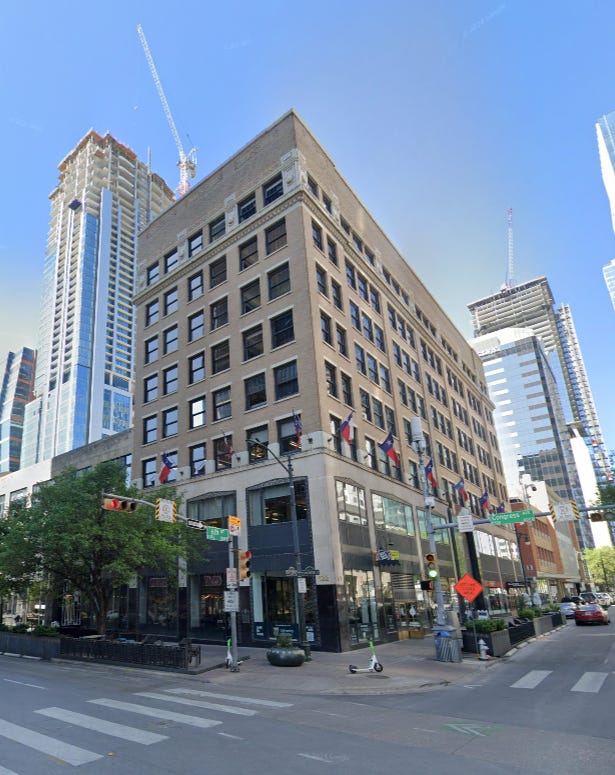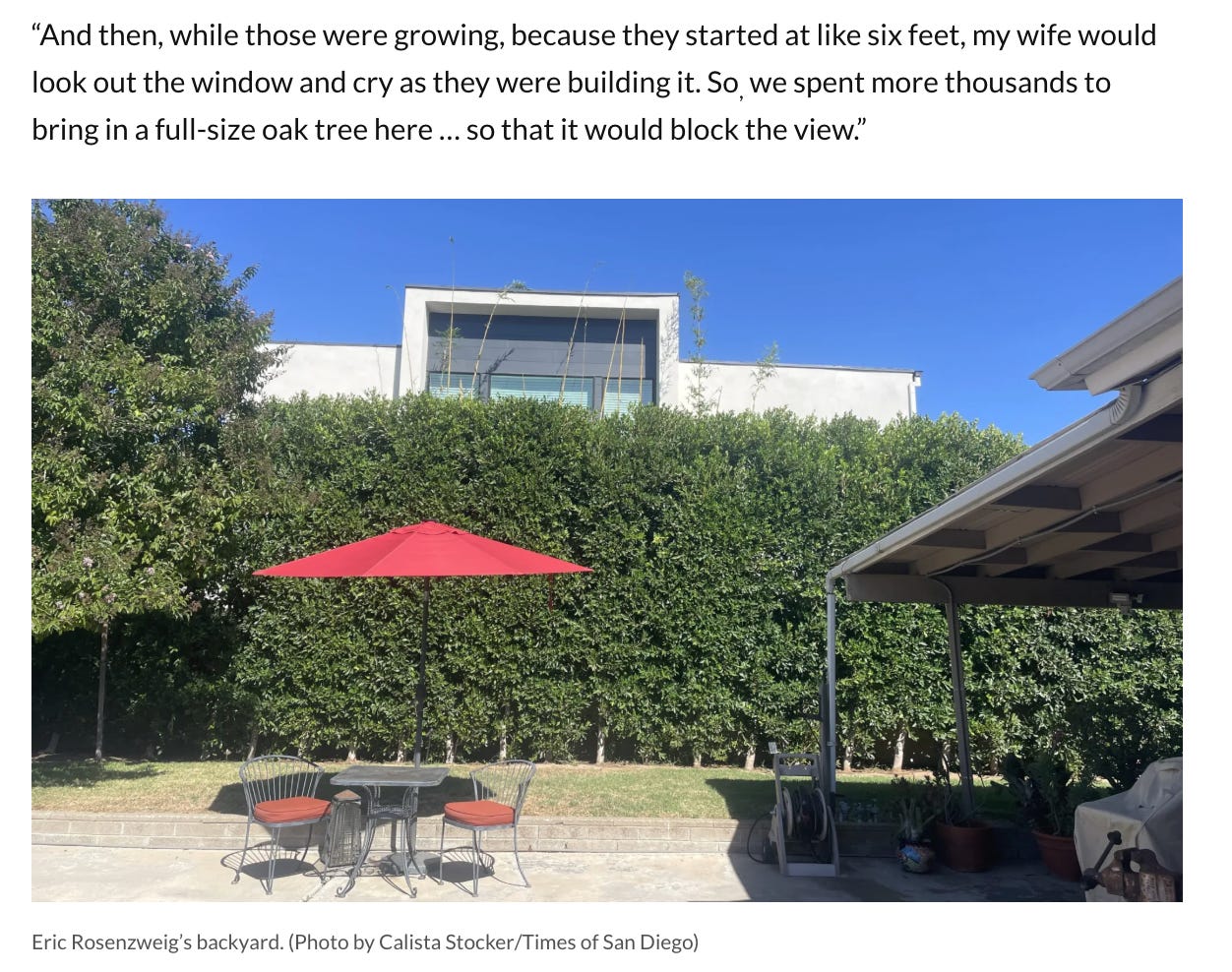Grappling With the Gravity of Urbanism and Higher Ed This Week & More
Around the College Towns: Links and commentary related to urbanism and higher ed for the week of Sept. 7 - Sept. 15
Note: Around the College Towns is my weekly links roundup article on urbanism and education. These posts usually cover news that may have fallen through the cracks rather than the big events (I must break this rule this week).
Behind the Scenes of College Towns
I usually start writing, or at least thinking about, these ‘Around the College Towns’ link roundup posts early in the week, as they are scheduled on Friday. I always have a short lead commentary that expands a bit on some issue from the week. Peeking back behind the curtain to see my process, I must admit that I struggled with how to proceed with this one.
You see, I often try to cover things that are not the biggest story in urbanism or higher ed in these posts. These are not full articles, just little tastes of a lot of things from the week. Plus, I also like to bring a bit of levity to these posts. Unfortunately, sometimes there are issues that bubble over to a boiling point, and I feel compelled to write about them here.
This week, obviously, there were two massive stories that intersected with the niche of College Towns. First was the shocking murder of Iryna Zarutska while riding public transit in Charlotte, North Carolina. This event caused a discussion/ debate throughout urbanist circles regarding safety in American cities and on public transportation.
I even had half a post written on the topic that tried to wade through these debates. I am pulling that post for now. I think it would be better served if I could flesh out the ideas into a longer piece on these divides within the movement, giving it proper weight.
The other issue that arose was the assassination of Charlie Kirk at Utah Valley University. This is a broader political story that has reverberations far beyond what I often cover on this page, but it happened on a college campus where his work was centered. These are places that I specifically focus on here at College Towns.
I do not have much to add to the topic right now, other than it was horrendous. I think it will forever lock Utah Valley into the broader memory of the tragedy, much like Kent State with the shootings there over half a century ago. But my analysis ends there, as everything around it deserves much more attention and detail than I can provide in a link roundup.
Both of these events from the week cut across the ethos of College Towns: the intersection of urbanism and higher education. This is why I thought I had to at least mention them today. But I didn’t believe that a pithy links roundup post would be the right space to fully dive into them intellectually. Both deserve the weight of my full thought and introspection. I hope I can offer that in the future.
Links I’m Reading This Week
Education
Ohio State bans land acknowledgments. I have long thought they were overused in our sector, but I have consternation over full-on bans.
Which brings me to… Expression (aka FIRE) is suing the state of Texas for its curfew law on free speech at college campuses. “The First Amendment doesn’t set when the sun goes down.”
The Institute for Humane Studies at George Mason University gets $1.5M grant for the Accelerating Classical Liberal Research Across Divides initiative. I do see a trend in this kind of movement in recent years. I will have a future article on the topic.
University of Austin gets accreditation candidate status. This is the kind of tedious bureaucratic stuff that I wondered if the all-star start-up college would do. They are doing it and are well on their way to full accreditation, it seems.
Food service, janitorial, and maintenance workers at the University of Minnesota system are on strike. During my visits to shuttered campuses, I realized that these kinds of workers are the forgotten backbone of higher ed.
Trump wants Harvard to create a vocational school. I don’t hate it! I will have a future article on vocational education and universities.
Baptist Bible College rebrands as Mission University. While the old name was pretty bland, the new name is still too generic, in my view.
Urbanism-ish
Philadelphia has been passed by Houston as the country’s “poorest big city.” I am somewhat surprised by the Texan city gaining this spot. What is the explanation? Just the sheer growth?
I was excited to see that the new Mardi Gras train has been selling out since it launched in August. It has been especially popular with football fans. Amtrak will now add more seating for the service
Locals around the “College Area” of San Diego are angry and disappointed with ADUs going up. In this age of housing crisis, we must accept thickening up our neighborhoods incrementally. We cannot freeze our places in amber.
In more San Diego news, a school district is looking to turn five sites into housing. These kinds of educational space redevelopments are becoming a noticeable trend.
In more news from California, Irvine is using robots to patrol the city to inspect streets/ sidewalks for ADA compliance and other issues. I am intrigued by this, and may have to drive over to see exactly what they are doing for a future article.
Speaking of the tech sector, an AI start-up is hoping to flood the internet with fake AI podcasts. Dead internet theory has made its way to the audio space. I honestly hope this company, and others trying to do this, fail very hard.
US Senator is trying to crush the self-driving car sector. This is expected, as I have said the innovation is about to become a hot-button cultural war issue. I will have more in this in the future.
Around Substack
Note: I also think it’s important to stay connected to the growing Substack community. Here are a few I am reading this week:
Coby Lefkowitz at Building Optimism does some a deep dive into the financial value that comes with smaller buildings… and with math! It’s these kinds of impressive yet fun pieces that are the real strength of Substack.
Altogether, the plan yields 360 units, 14 more than The Arnold despite being shorter and having far less total floor area. Yes, this means that the units are smaller, but nearly 600 square feet for a one bedroom, and 840 for a two bedroom, are perfectly reasonable amounts of space. In a neighborhood designed to draw people outdoors, rather than push them insides to retreat from vapid surroundings, that tradeoff is more than acceptable. There’s a roughly even split between one and two bedrooms, with a few studios sprinkled in.
Sonja Trauss has a piece in the In Practice substack chronicling her experience getting housing built in an ultra-affluent California city. It is inspiring to see people on the ground getting the work done!
Because of YIMBY Law's reputation for taking swift action to enforce housing laws, the developer's attorney reached out to tell us about how the city was planning to kill his client's project, and asked if we could help. We could and we did. Because neither the NIMBYs nor the city council nor HCD make the final decisions on zoning questions like this one. Nor do we. The courts do.
Closing Time… Screen Dash
Mercedes unveiled a new car model with a dashboard made entirely of screen. These kinds of infotainment screens in cars have already been proven to be less safe than tactile buttons. There has also been a growing movement of consumers who want to reject this ‘innovation’ in their cars. But it seems that some auto manufacturers cannot help themselves.

Spanning 39.1-inches, it is the largest continuous Mercedes-Benz screen to date, delivering convenience and comfort on everything from everyday errands to longer family road trips… Integrated into the glass, 162 illuminated stars can adjust to your color preference — an effect that reminds you that the sky is the limit behind the wheel of this vehicle.
Not only is this kind of screen more dangerous, it is also more annoying to use and expensive to fix. I was hoping that we were past this kind of over-engineered and underthought design. It seems that screens in cars are here to stay, invading even more parts of the vehicle. Self-driving cars cannot come fast enough.






